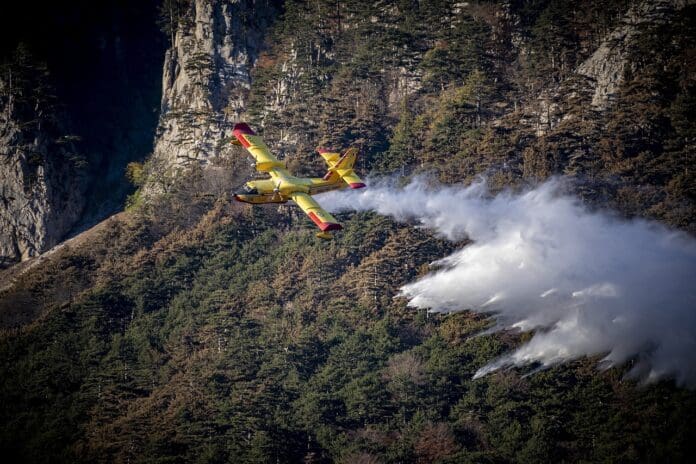This post is also available in:
 עברית (Hebrew)
עברית (Hebrew)
Existing Technology struggles with the autonomous detection of wildfires, particularly in remote and expansive areas. Recently, a breakthrough in wildfire management has emerged with the development of a swarm of AI-harnessing, self-coordinating drones designed to detect and investigate fires.
Developed at the University of Sheffield’s School of Electrical and Electronic Engineering and using advanced AI technology, these drones leverage both thermal and optical imaging to detect fires automatically. The drones relay the information back to fire teams, enabling rapid and informed responses.
The technology integrates swarm capabilities, developed by the University of Bristol, which allows the drones to coordinate autonomously as first responders. This means they can deploy fire retardant efficiently, monitor the fire’s progression, and return to base for recharging and reloading, as reported by TechXplore. The team’s use of AI and Computer Vision is designed to operate under various weather conditions and extract critical information from video data.
While single autonomous drones have been used for these purposes in the past, swarm technology enhances efficiency and reliability. The ability to use multiple drones working in unison represents a significant advancement in wildfire management, potentially transforming operations by providing firefighters with powerful tools for remote fire suppression.
Lancashire Fire and Rescue has been testing these drones as part of a collaborative effort with Windracers, a British developer of self-flying cargo aircraft, and top AI and robotics experts from the University of Bristol and the University of Sheffield. This partnership has led to the creation of technology capable of autonomously detecting and combating fires before they escalate.
The Windracer ULTRA self-flying cargo aircraft, which can autonomously carry up to 100 kg of fire retardant, is also employed in this effort. This swarm can cover vast areas and monitor high-risk zones throughout the summer.


























